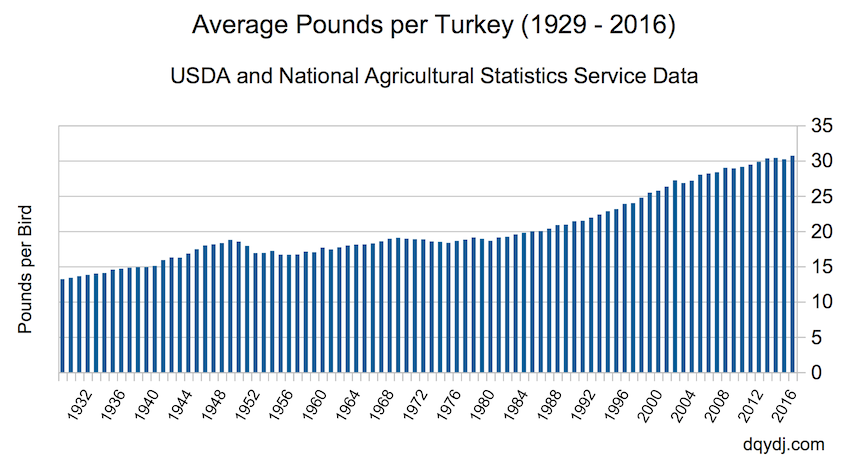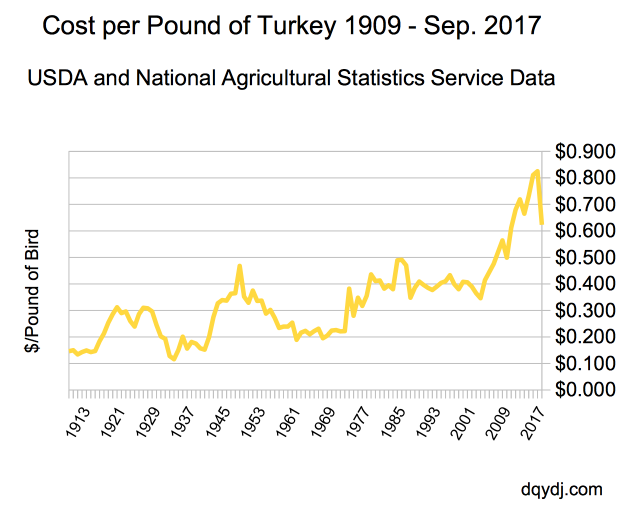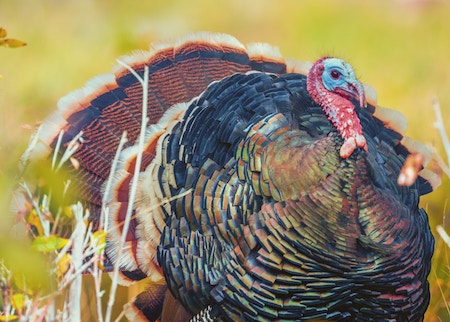In 2016, the venerable turkey (perhaps more accurately currently, vulnerable turkey) clocked in at an average of 30.684 pounds. That's right - according to data from the USDA and National Agricultural Statistics Service, turkeys are 132% larger than they were in 1929. That year, turkeys clocked in at a mere 13.185 pounds.
Pretty stuffed, wouldn't you say?
The Tale (tail) of a Popular Bird
To satiate our desire for turkey facts around Thanksgiving, we sought out answers to the most pressing turkey questions. Did you know that 244,500,000 turkeys were produced in 2017 (it's late enough that we know the count)? Contrast that out-of-context number with some context from 1929... that year saw only 18,136,000 birds produced.
Also interestingly, turkey prices have fallen quite a bit from their 82.5 cent a pound average in 2016. So far in 2017, turkeys have cost an average of 62.3 cents a pound. That's the lowest price since 2010 when they were selling for an average of a mere 61.2 cents. Even so, you only need to go back to 2009 to see prices under 50 cents a pound; that year averaged 49.9 cents per pound.
More Meat, Bigger Birds
What's behind the bigger birds? Well, better poultry agricultural science, housing, diet, and medical regimens, for sure - but that's not the whole story. As reported by the Atlantic and a study in 2007's Poultry Science by G. B. Havenstein, P. R. Ferket, J. L. Grimes, M. A. Qureshi, and K. E. Nestor, a lot of the change is due to selective breeding.
The genetics of today's birds have enabled modern birds to put on weight at a much faster clip than legacy turkeys. The study found that birds approximating 1966 birds on a 2003 diet grew to an impressive 20.322 pounds at 196 days. Still, that was nothing compared to 2003 birds on a 2003 diet - clocking in at 38.33 pounds in the same timeframe. Dang.
Gobble gobble - happy thanksgiving!



